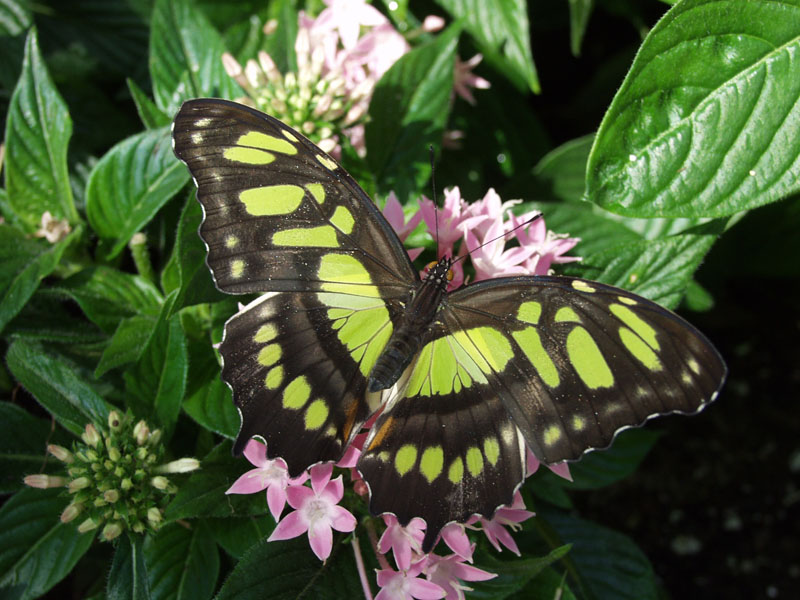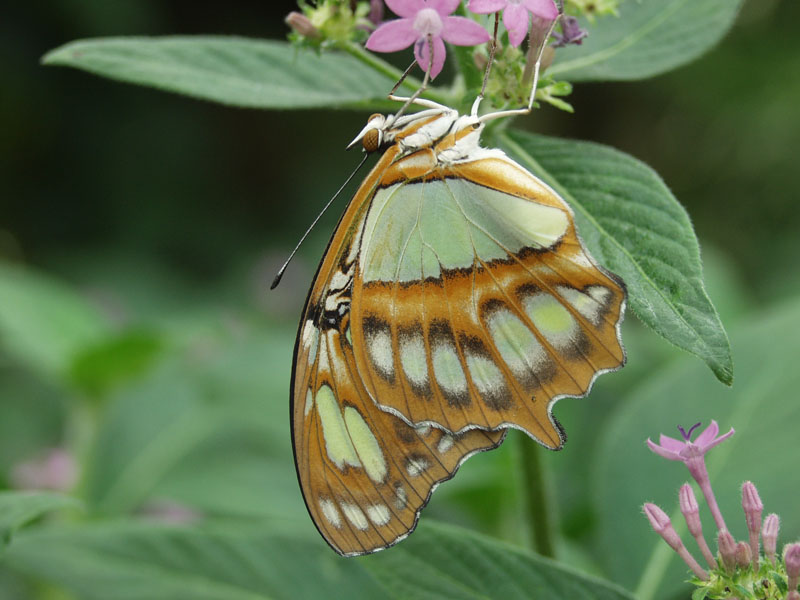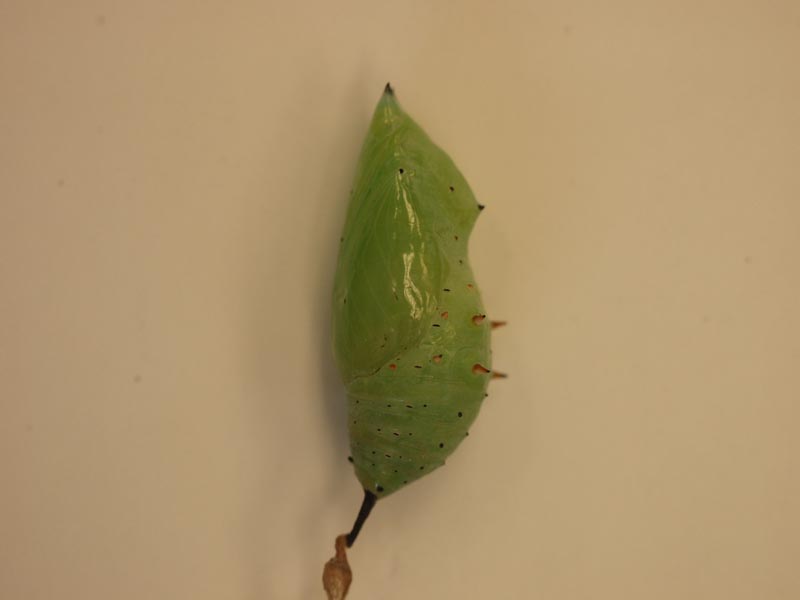


Adults will feed from a variety of sources such as flower nectar, rotting fruit, bat dung, or dead animals.
The origin of the genus Siproeta and the specie stelenes is currently unknown.
The Malachite butterfly is primarily found in subtropical evergreen and deciduous forest but they are known to make long flights to visit orchards or plantations.
Males usually sit on plant foliage waiting for passing females, but they may also take slow leisurely flights to patrol for willing females. After mating the female Malachite butterfly lays her eggs singly on the newest growth of the host plants. A pupa is formed once the caterpillar has consumed enough host plant.
In the northern part of their range depending on the temperatures there can be two to three broods during the summer with a winter brood which hibernates. In the southern part of their range adults can be found most of the year.
Malachite is a semi-precious green gemstone and the Malachite butterfly is so-named because of the pale green translucent patches visible on the upper sides of its wings.